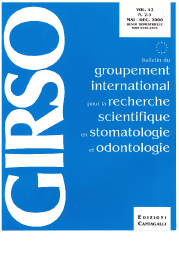Salivary mercury levels in healthy donors with and without amalgam fillings
Résumé
Dental amalgam (AMG) is the most diffused dental filling material. Since it is constituted for at least 40-45% of Hg, many questions have raised about its safe use. Hg particles from dental amalgam dissolve in saliva and, being ingested, they reach the blood stream through the intestinal mucosa. It has been demonstrated that amalgam fillings continuously release Hg vapour and that there is detectable Hg in expired and inspired air of amalgam owners. It is not yet fully accepted that AMG fillings represent the principal source of Hg for man and the aim of this study was to evaluate if the mercury level in saliva: 1) was higher within people bearing dental amalgam restorations than in people with no restorations; 2) was different between males or females; 3) increased in relation to the surface of amalgam restorations. The results showed a correlation between number of fillings and salivary Hg, between amalgam surface and salivary Hg. The Authors could finally assert that AMG fillings represented the principal source of salivary Hg in the subjects studied.
Téléchargements
Publié-e
Numéro
Rubrique
Licence
I hereby certify that the authors of the above manuscript have all:
1. Conceived, planned, and performed the work leading to the report, or interpreted the evidence presented, or both;
2. Written the report or reviewed successive versions and shared in their revisions; and
3. Approved the final version.
Further, I certify that:
1. This work has not been published elsewhere and is not under revision in another journal;
2. Humane procedures have been followed in the treatment of experimental animals (if applicable);
3. Investigations in humans was done in accordance with the ethical standards of the responsible committee on human experimentation or with the Helsinki Declaration (if applicable).
4. This paper has been carefully read by a native English speaker who is familiar with the field of work (this applies to authors who are not fluent in English); and
5. The copyright of the article is transferred from the authors to the Bulletin du Groupement International pour la Recherche Scientifique en Stomatologie et Odontologie upon acceptance of the manuscript.



